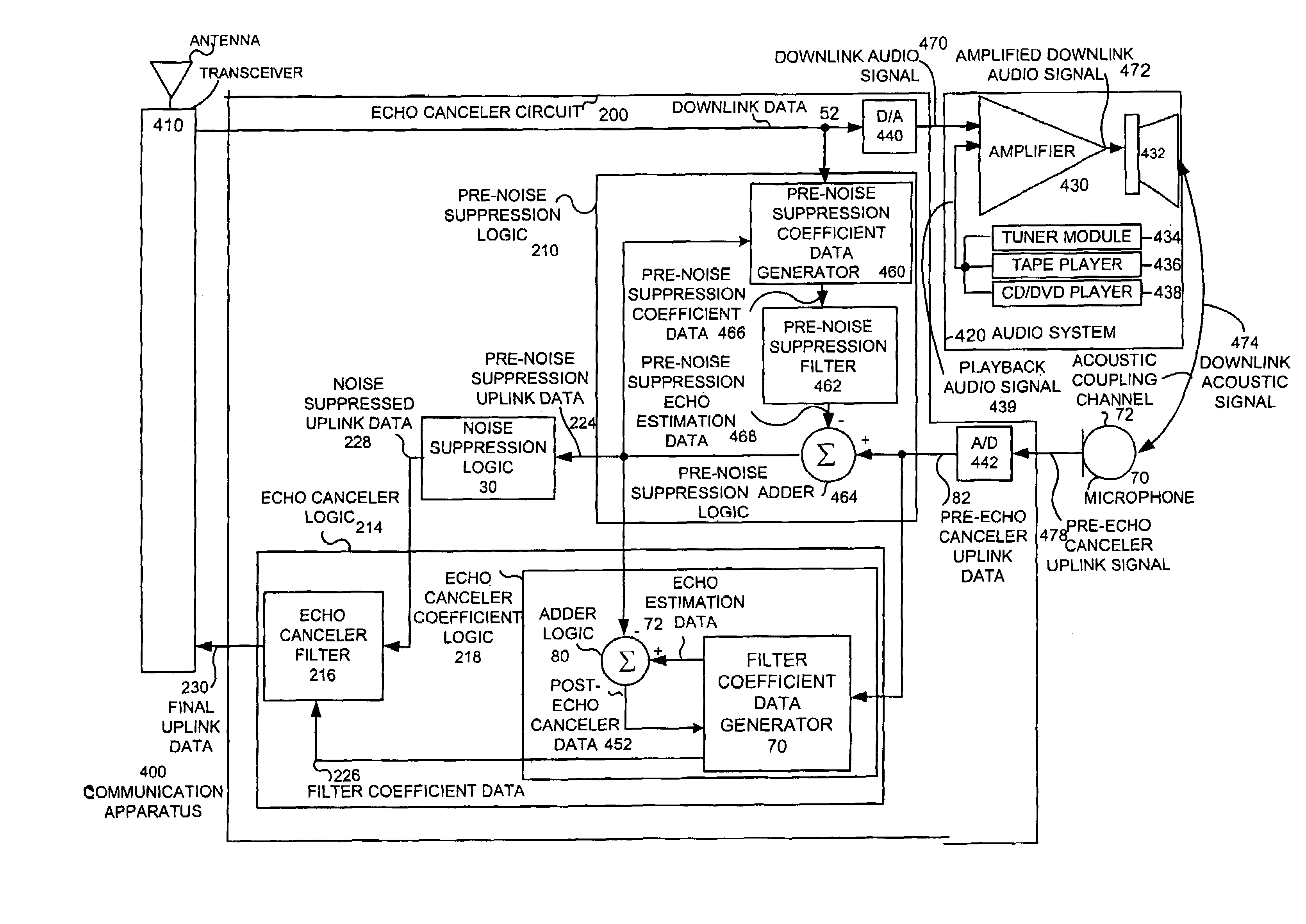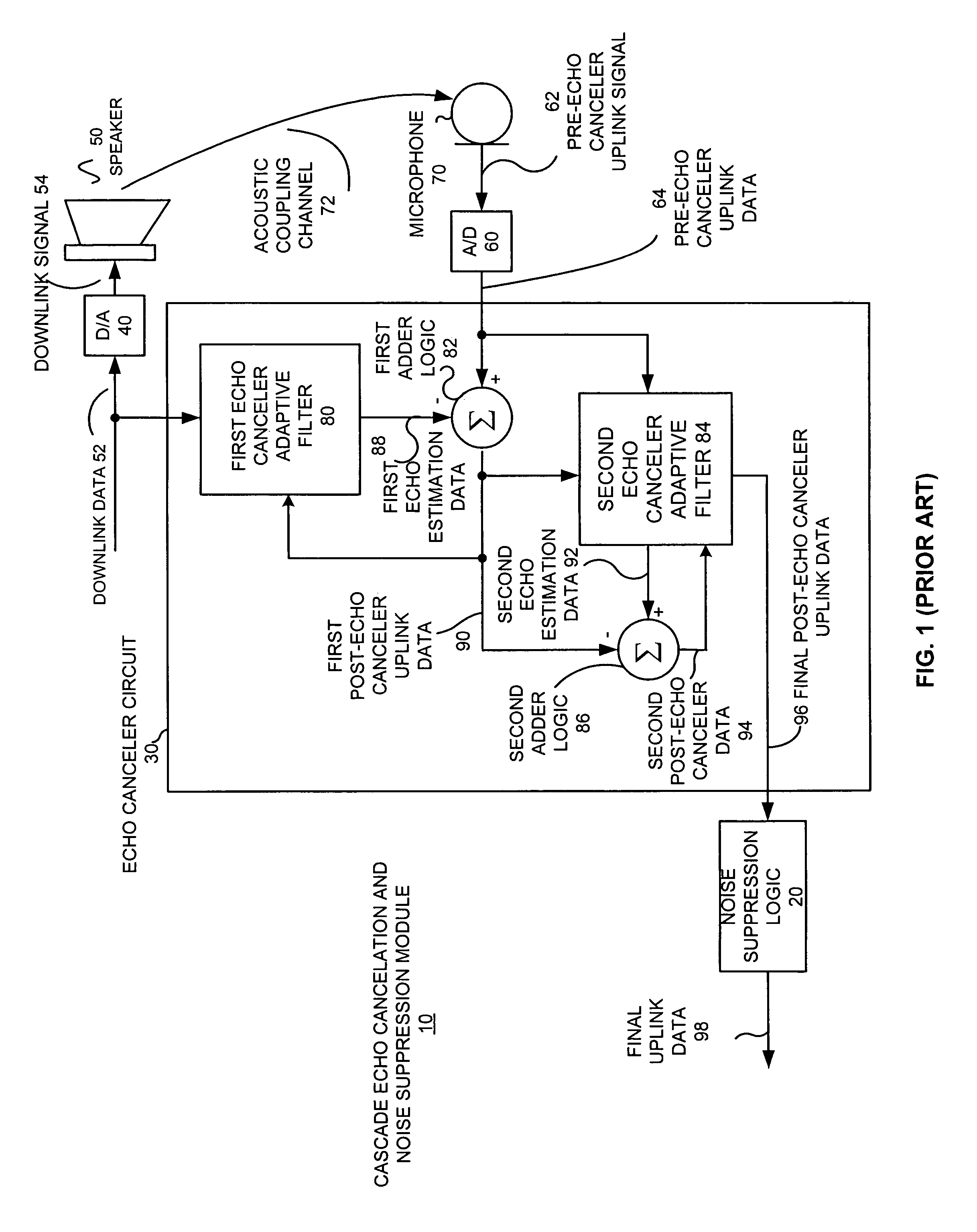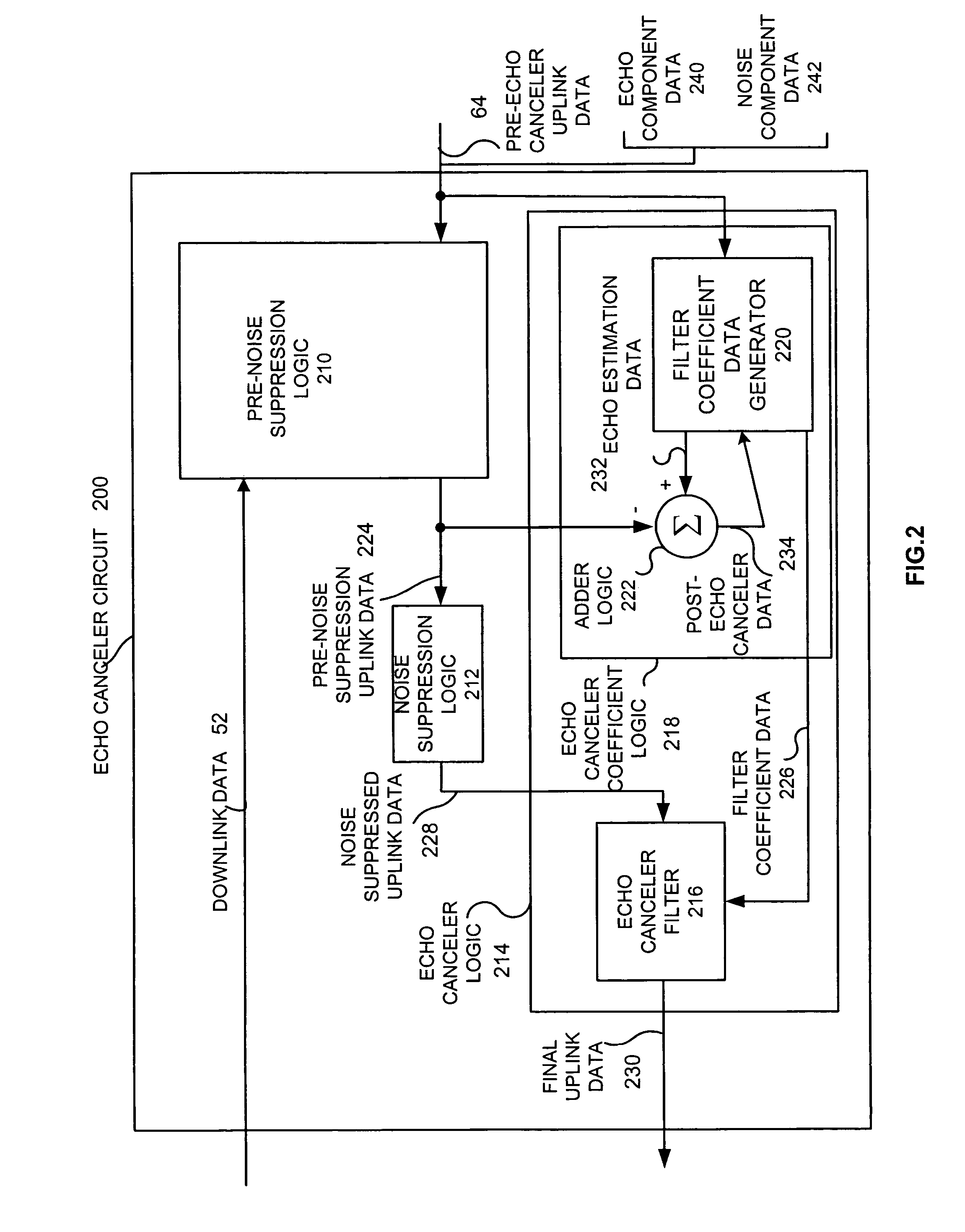Echo canceler circuit and method
a canceler circuit and echo cancellation technology, applied in the field of communication systems, can solve problems such as limitations in algorithm echo modeling convergence rate, idle or significantly slower update procedure of echo canceler adaptive filter coefficient, and inability to solve the stable condition known as “howling”
- Summary
- Abstract
- Description
- Claims
- Application Information
AI Technical Summary
Benefits of technology
Problems solved by technology
Method used
Image
Examples
Embodiment Construction
[0020]An echo canceler circuit and method performs echo cancellation and noise suppression in a non-interfering manner. The echo canceler circuit includes pre-noise suppression logic, echo canceler coefficient logic, noise suppression logic and an echo canceler filter. The pre-noise suppression logic receives pre-echo canceler uplink data and downlink data, and in response produces pre-noise suppression uplink data. The echo canceler coefficient logic receives the pre-noise suppression uplink data and the pre-echo canceler uplink data, and in response produces filter coefficient data. The noise suppression logic receives the pre-noise suppression uplink data, and in response produces noise suppressed uplink data. The echo canceler filter receives the noise suppressed uplink data and the filter coefficient data and in response produces final uplink data. The invention described herein presents a unique cascaded echo canceller filter and noise suppression topology that allows for incr...
PUM
 Login to View More
Login to View More Abstract
Description
Claims
Application Information
 Login to View More
Login to View More - R&D
- Intellectual Property
- Life Sciences
- Materials
- Tech Scout
- Unparalleled Data Quality
- Higher Quality Content
- 60% Fewer Hallucinations
Browse by: Latest US Patents, China's latest patents, Technical Efficacy Thesaurus, Application Domain, Technology Topic, Popular Technical Reports.
© 2025 PatSnap. All rights reserved.Legal|Privacy policy|Modern Slavery Act Transparency Statement|Sitemap|About US| Contact US: help@patsnap.com



